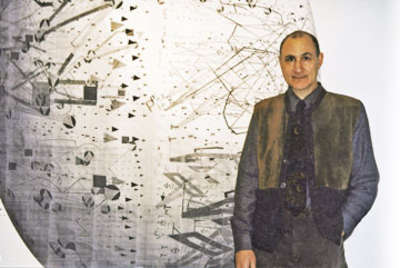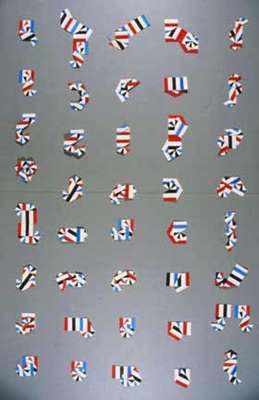Epuré studied electronics and computing in his home city of Bucharest (Romania). He switched to painting in the 1960s because of problems [what kind?] with the ruling regime in Romania. His first ideas of bringing algorithmic and geometric thinking into his artistic activity date back to 1967, when he began working on projects combining art and science. He states that he first publicly showed results of his work in 1970.
He has lived and worked in New York since 1980. Since then, his mastery of algorithms for generative art has steadily increased.
Epuré, by the end of 1967, conceived of his life-long project Intrinsic Art which developed into three main strands (according to the kind of algorithm used): S-Bands (quite modestly standing for “Sherban’s Bands”), Meta-Phorms (built from Meta+Metaphor+Forms), and sculptures (binary and protruded). He defines Intrinsic Art as"a synthesis of art’s fundamentals, mathematics, philosophy, and technologies." (2014)
The S-Band (since 1968) images are produced by an algorithmic art generator. Cybernetic relationships play a role during the Band’s manipulation. The idea behind the band is to produce non-subjective art forms.
The Meta-Phorm (since 1969) images are intended to be visual appearances or artistic representations of mathematical propositions by introducing geometrical forms into game relationships.
A comprehensive presentation of “Intrinsic Art” is given in an artist book and two movies (published in 2012).
In 1978, after reading Paul Klee’s collected essays on art (La Pensée Créatrice and Histoire Naturelle Infinie), he came to regard Klee as one of his mentors. He says: “Klee’s cosmo-genetic vision represents a unique vision in exploring universal laws and using science as a creative tool for art.”



